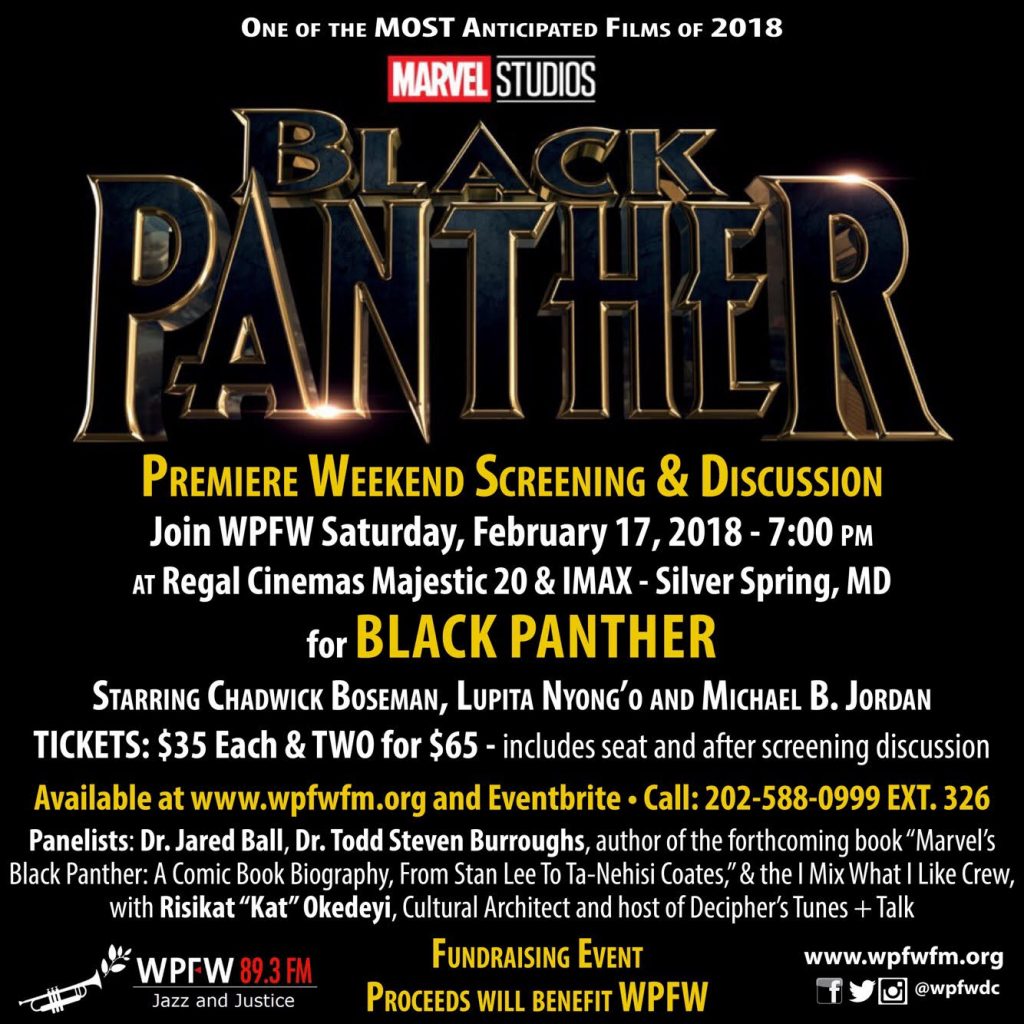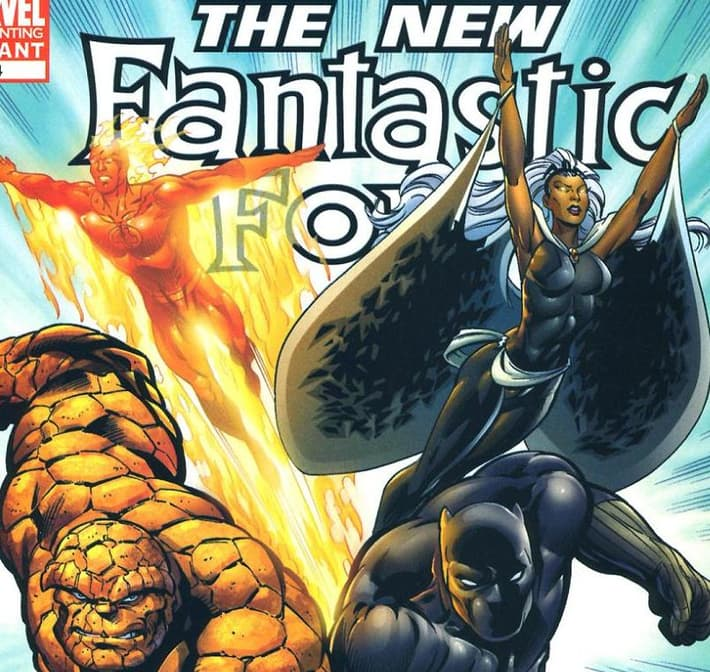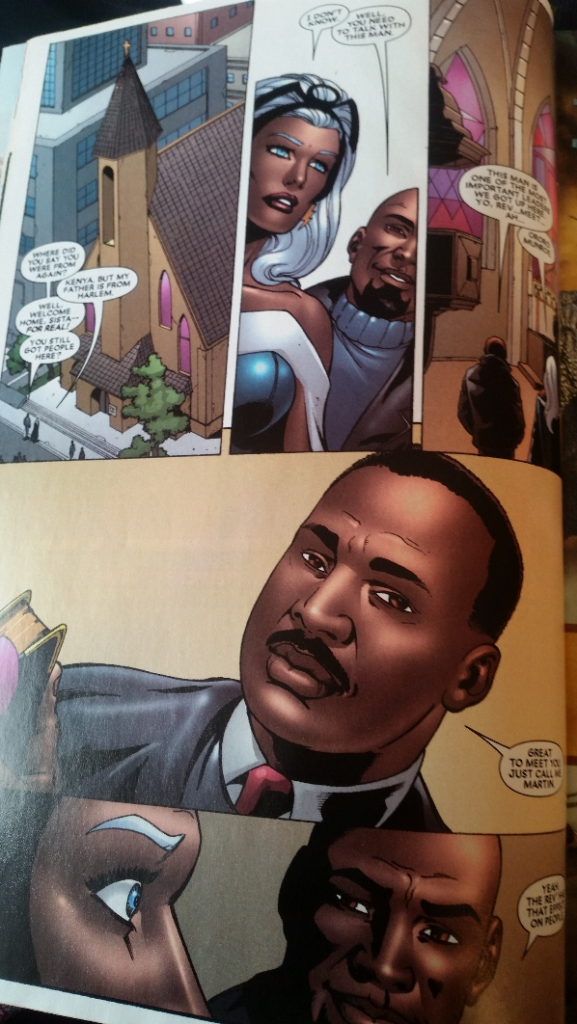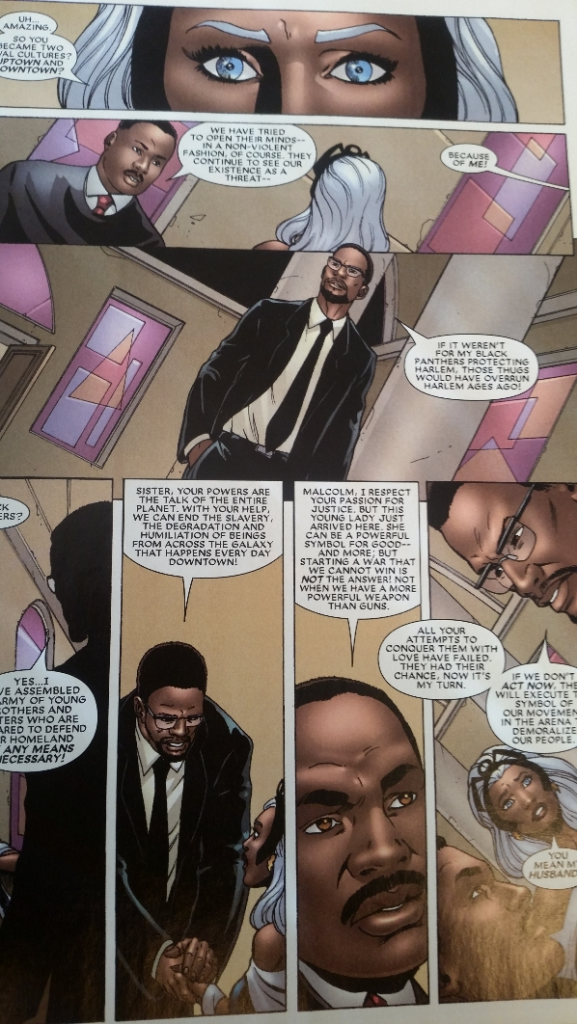
That Time Storm And The Black Panther Led The Fantastic Four: Magic Frogs, Martin Luther King, and Malcolm X
By Todd Steven Burroughs
[EXCERPTED FROM THE FORTHCOMING (FEBRUARY 2018): Marvel’s Black Panther: A Comicbook Biography, From Stan Lee to Ta-Nehisi Coates,” published by Diasporic Africa Press, 2018.]
From 2007 to early 2008, the Panther and Storm joined Ben Grimm (the Thing) and Johnny Storm (the Human Torch) as The “New” Fantastic Four.
Team leader Reed Richards (Mr. Fantastic) and his wife Susan Storm (the Invisible Woman and deputy leader of the group), on opposite sides of the “Civil War” dispute over whether superheroes should be registered with the federal government, decided to take some time and have a second honeymoon (depending on The Fantastic Four’s long and convoluted continuity, it could have been their first or second).
The move—for King T’Challa and Queen Ororo to lead the team—meant that the Black Panther and Storm were now in two different books being published each month.

The Fantastic Four title was being written by Dwayne McDuffie, a co-founder of Milestone Comics and the co-creator of the Milestone characters Static, Icon, and Hardware. He was also a writer of Cartoon Network’s Justice League Unlimited—in this writer’s opinion, the best mass audience superhero animated series ever made. In Fantastic Four, McDuffie put the new quartet through a cosmic storyline involving the young superhero Gravity, Galactus, and the Silver Surfer, then a battle against the Frightful Four featuring Klaw as a surprise fifth member.
McDuffie kept his stories power-driven. But it was Black filmmaker/Black Entertainment Television executive Reginald Hudlin’s Fantastic Four adventures in the Black Panther title that placed new (as in, Black) cultural references in the cosmic quartet’s adventures.
Taking a nod from Lee/Kirby’s Fantastic Four, vol. 1, nos. 90-93—a four-part story where the Thing gets captured and put in an alien gladiator arena by a group of the alien race of Skrulls who had decided to live like American mobsters on another planet made to resemble 1930s Earth—Hudlin does his own, unique follow-up.

Under Hudlin, King Solomon’s Frogs, the devices used in the often goofy 1970s Jack Kirby Panther run, take the heroes to that same planet. But now the Skrulls are influenced by the Earth of the 1960s, and many of the Skrulls have decided on another group of people to emulate. So the Black Panther is captured by “Downtown” mobster Biggie, while Storm allies herself with “Uptown’s” leaders, the planet’s versions of Martin Luther King and Malcolm X, the latter the leader of an ad-hoc army of Black Panther Party members.
This story allows Hudlin to put into a story an idea that Blacks have had for 50 years: what if King and Malcolm had joined forces?

Interestingly enough, this tale may contain the first appearance of the actual Black Panther Party in Black Panther. Storm, as a new leader of Uptown, becomes a kind of Angela Davis figure. (The cover of Black Panther vol. 4, no. 34 shows her in a [white] Afro, looking like an early 1970s Pam Grier/Davis type, with actual members of the Black Panthers behind her.)
After T’Challa kills Biggie, Storm introduces her husband to King and Malcolm. She says that the duplicates of 20th-century Black America’s most historic duo are the ones best “qualified to bring the planet back to civilization.”
…
One Comment